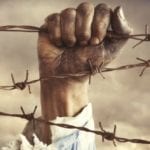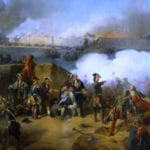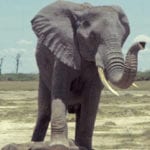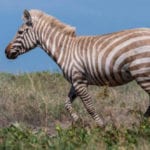 Politics
Politics  Politics
Politics  Weird Stuff
Weird Stuff 10 Eggs-traordinarily Odd Eggs
 History
History 10 Desperate Last Stands That Ended in Victory
 Animals
Animals Ten Times It Rained Animals (Yes, Animals)
 Mysteries
Mysteries 10 Devastating Missing Child Cases That Remain Unsolved
 Creepy
Creepy 10 Scary Tales from the Middle Ages That’ll Keep You up at Night
 Humans
Humans 10 One-of-a-kind People the World Said Goodbye to in July 2024
 Movies and TV
Movies and TV 10 Holiday Movies Released at Odd Times of the Year
 Politics
Politics 10 Countries Where Religion and Politics Are Inseparable
 Weird Stuff
Weird Stuff 10 Freaky Times When Famous Body Parts Were Stolen
 Politics
Politics The 10 Most Bizarre Presidential Elections in Human History
 Weird Stuff
Weird Stuff 10 Eggs-traordinarily Odd Eggs
 History
History 10 Desperate Last Stands That Ended in Victory
Who's Behind Listverse?

Jamie Frater
Head Editor
Jamie founded Listverse due to an insatiable desire to share fascinating, obscure, and bizarre facts. He has been a guest speaker on numerous national radio and television stations and is a five time published author.
More About Us Animals
Animals Ten Times It Rained Animals (Yes, Animals)
 Mysteries
Mysteries 10 Devastating Missing Child Cases That Remain Unsolved
 Creepy
Creepy 10 Scary Tales from the Middle Ages That’ll Keep You up at Night
 Humans
Humans 10 One-of-a-kind People the World Said Goodbye to in July 2024
 Movies and TV
Movies and TV 10 Holiday Movies Released at Odd Times of the Year
 Politics
Politics 10 Countries Where Religion and Politics Are Inseparable
 Weird Stuff
Weird Stuff 10 Freaky Times When Famous Body Parts Were Stolen
10 Horrifying Stories Of Surviving Nature’s Fury
Humanity has worked wonders during its time on this planet. We’ve cured deadly diseases, explored our world and others, and have notched achievement after achievement in science, engineering, and so on. Nevertheless, we’re sometimes reminded how quickly nature can wipe it all away, leaving us helpless, dust swept away by indifferent wind.
SEE ALSO: 10 Natural Disasters That Created A More Beautiful World
Natural disasters of all kinds have claimed countless human lives throughout history. But for every volcanic wasteland, shattered city, and razed coastline, there are survivors. Whether through luck, the aid of others, skill, or a combination thereof, people walk away from natural events that could have easily taken their lives, as is the case for those below.
10 Struck By A Lava Bomb
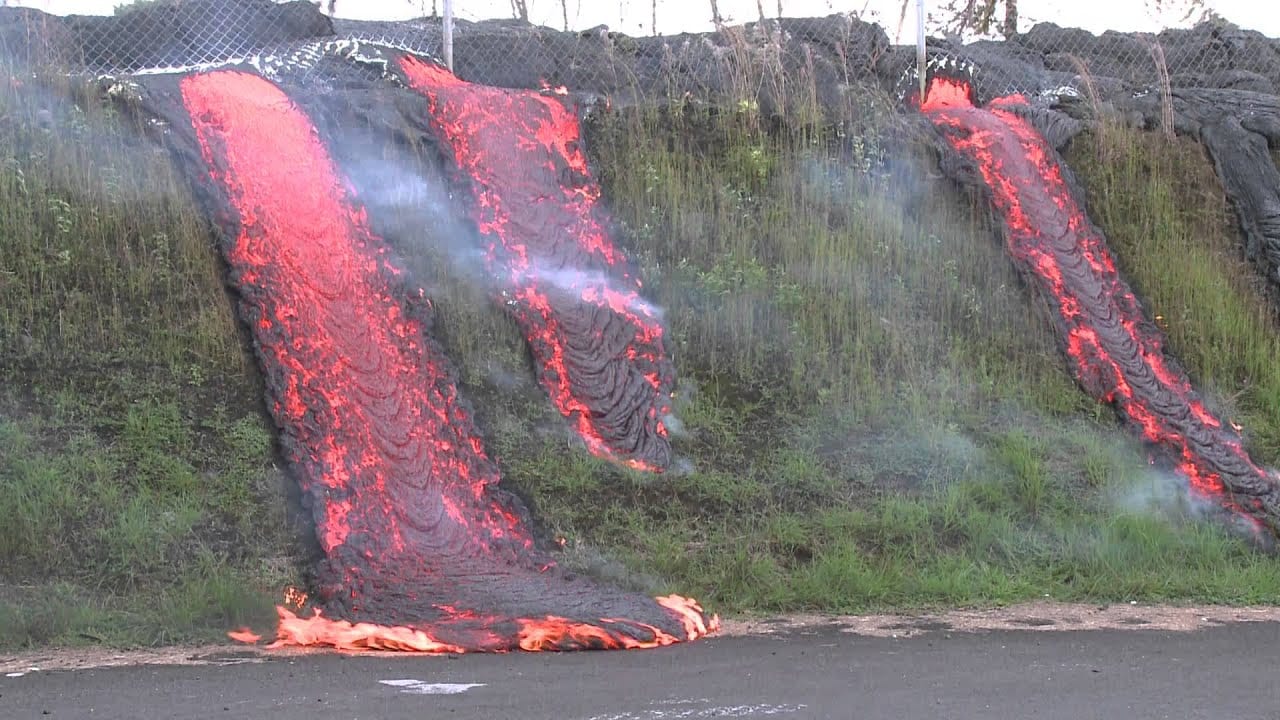
May 2018 saw the Puna district of Hawaii’s Big Island inundated with lava flows from the opening of numerous fissures. Many people evacuated, but some remained in a bid to protect their homes and those of their neighbors. One such resident was Darryl Clinton, who lived to the east of the Leilani Estates neighborhood, which was hit by quite a bit of volcanism.
Darryl knew the dangers. While lava flows are generally slow and easily avoided, “lava bombs,” ejected gobs of molten rock, are of greater concern. For five days, he and others would hose houses down when they were struck by flying molten rock from Fissure 17, and they were proficient in watching for the lava bombs, gauging where they’d land, and making sure they weren’t standing in the bombs’ paths. Darryl’s luck ran out on May 19.
That day, Darryl was standing on the third-floor lanai of his neighbor’s house and talking on his phone. A lava bomb which Darryl would later describe as moving less in an arc and more like a rifle shot hit him in the ankle, flipping him off his feet and sending him into a couch, which promptly lit on fire. A friend rushed to his aid. Darryl looked at his ankle and saw bone protruding from his flesh. His foot was hanging off the rest of his leg “like a hinge,” and he was bleeding profusely. At this point, all Darryl knew was excruciating pain and the fear that he’d bleed to death.
Darryl’s friend got a tourniquet on him and dragged him downstairs and into her truck. She called 911 and sped off to meet up with first responders. Darryl was taken to the Hilo Medical Center, fully expecting to lose his leg. Amazingly, doctors managed to save it. Darryl said of the lava bomb that hit him, “It was a mean one. And I mean, it could have hit anywhere else and it would have been all over.” Despite his brush with death, Darryl has no plans for leaving the area and described seeing the lava flows up close as “the event of a lifetime.”[1]
9 Caught By A Tornado
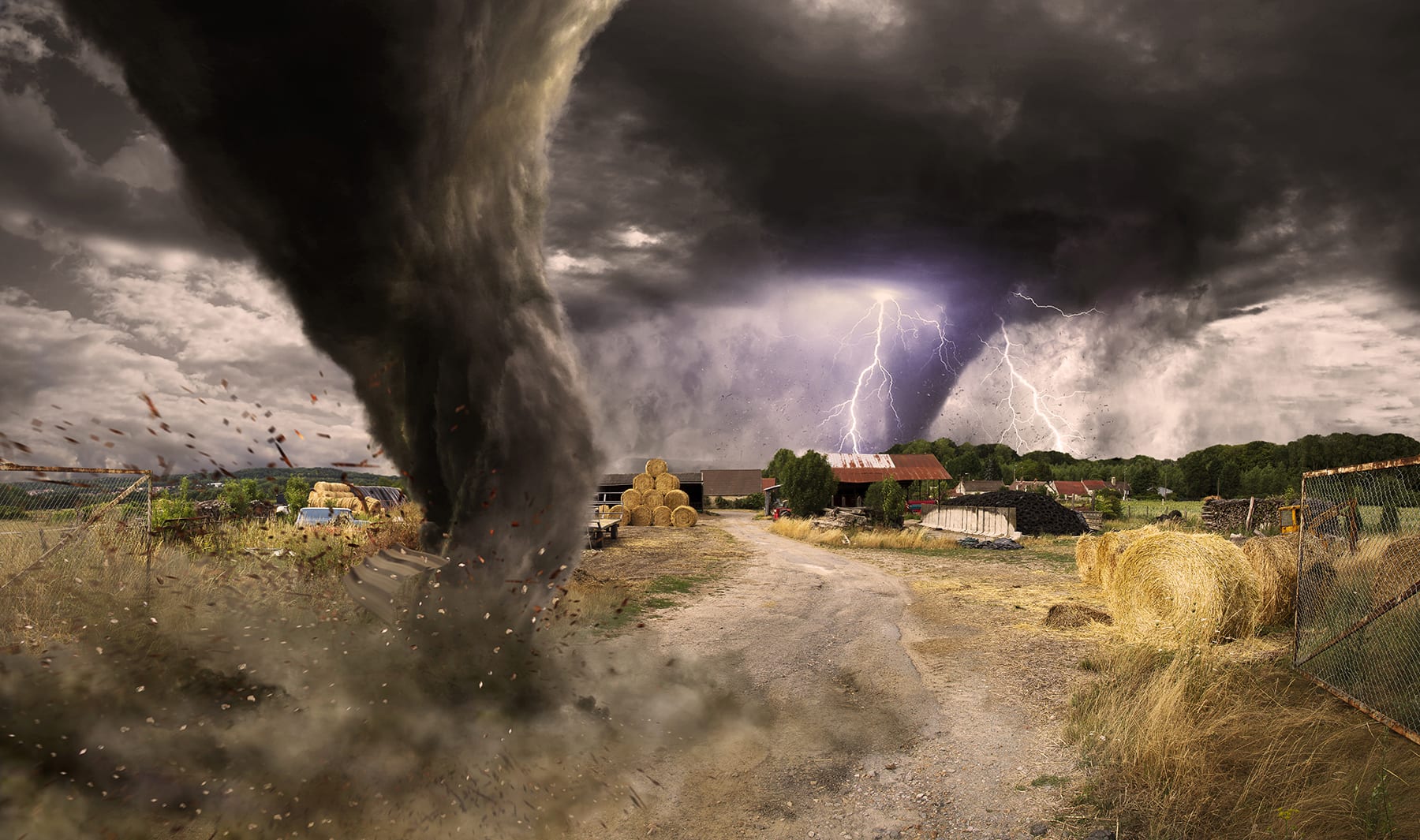
January 24, 2018, was going to be a busy day for Mark Hardgrove of Orlando, Florida. He had a meeting down in Fort Lauderdale, and the weather did not look promising. He left early for this reason, setting off down the Florida Turnpike in his Hyundai Santa Fe.
His rainy drive was tedious, hampered by poor visibility, but Mark nevertheless progressed toward his destination. He saw large, dark clouds to the west, but he felt he could get to the meeting before those clouds hit. As he neared the Coconut Creek Parkway exit, however, things became much worse. Mark grew up in Ohio, and he knew a storm that could spawn a tornado when he saw one. He didn’t see a twister yet, but the trees were whipping in the wind, and a rotating cloud was approaching. Compounding the issue, he was boxed in the left lane by other cars, and everyone slowed to a stop as the funnel cloud approached. Mark was stuck.
He watched the tornado touch down near the exit, hoping it would lift back up. Instead, his SUV began to rock back and forth. The next thing Mark knew, all he could see outside his windows was gray. He felt as though he was rising. Although Mark could only hear the howling of the wind and feel what was going on, two truckers on the northbound side of the turnpike saw it all. Mark’s Santa Fe was tipped into the air and did a barrel roll 20 feet (6 m) off the ground on its journey to the other side of the highway. It landed on the eastern shoulder of the northbound side, facing the oncoming traffic.
A stunned Mark sat among deployed airbags as the two truckers came to help him. They popped the airbags, cut Mark free from his seat belt, and gave him water. He never got the truckers’ names, but he was thankful for their help.
While the SUV took a beating, Mark himself sustained only minor injuries.[2]
8 The Boy Who Gave His Life To Save Another

On April 13, 1949, Kelcy Allen was a six-year-old boy attending Lowell Elementary School in Tacoma, Washington. April 13, 1949, is also the date of a severe earthquake that was felt across Washington and surrounding states, buckling railroad tracks and sending houses into the Puget Sound. The tremor was described by news reports at the time as the worst earthquake in the history of the Pacific Northwest. It struck at 11:55 AM, just before lunch.
At that moment, Kelcy was on the ground level of the elementary school when everything began to shake. Marvin Klegman, an 11-year-old crossing guard, grabbed the frightened kindergartener and led him outside. Just as they exited the building, a cornice collapsed, sending bricks tumbling toward them. Marvin, ever vigilant, yelled, “Look out!” and used his body to shield Kelcy from the falling masonry. Kelcy’s next memory was waking up in an ambulance. Marvin had died protecting Kelcy from the bricks.
Kelcy’s family moved to Portland, Oregon, not long after. He grew up always remembering the crossing guard who saved him, but he never knew the boy’s name. After another earthquake struck the Puget Sound area in 2001, Kelcy had to know. The next day, he was in the Tacoma Public Library, where he finally learned the name Marvin Klegman. He went on to give an interview to The News Tribune (a Tacoma newspaper) about the day Marvin saved his life. Kelcy then raised money for a statue of Marvin to be placed outside Lowell Elementary. In addition, April 13 is observed as Marvin Klegman Day at the school.[3]
7 Swept Away By A Flash Flood
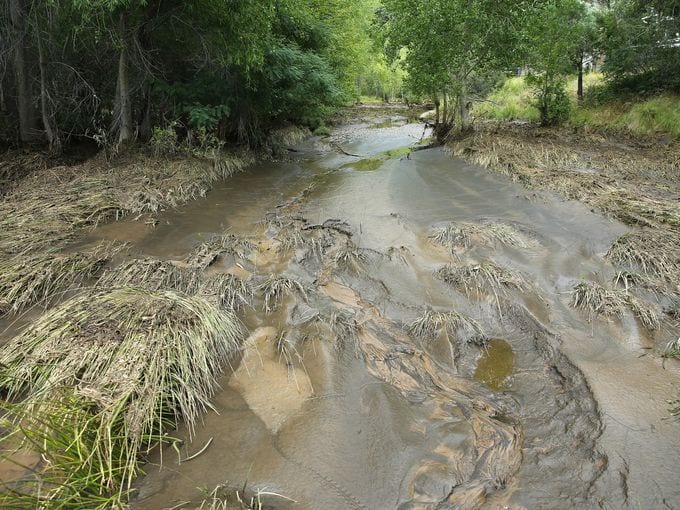
Cesar Garcia and his family expected nothing more than a pleasant Saturday outing on July 15, 2017. Of the 14 family members who went on that day’s fateful hike, only four would emerge alive.
Cesar’s sister, Maria, was turning 27, and the Phoenix, Arizona, family had gone on a day trip to celebrate. They chose to hike to a swimming hole situated below a waterfall known as Water Wheel, which is in the Tonto National Forest near Payson. Unbeknownst to them, heavy rain had begun to fall several miles away as they hiked between hills to the swimming hole, triggering a flash flood.
The Garcias were about a mile (1.6 km) into their hike when they saw a wall of water approaching. There was little time to react. Cesar held his one-year-old daughter, Marina, close and grabbed one of his nephews by the shirt. Then the torrent hit. Cesar’s nephew was immediately ripped from his hand, while rocks and branches tore flesh from Cesar’s legs and bruised his ribs. He held Marina tight as they were pulled underwater by the current. Cesar managed to grab onto a bush but couldn’t hold on for long before the murky, debris-filled water pulled him loose again, tumbling him over jagged rock. All Cesar could think of was to hold onto Marina. Finally, he managed to grab onto a tree, Marina still in his grasp.
For two hours, Cesar clung to the tree, waiting for the flood to die down. Not long after he’d made it to the tree, he learned some good news from hikers who’d shown up. Cesar’s wife and eight-year-old son had managed to escape the current and were alive. Though the rushing water prevented any rescue for the moment, one of the hikers managed to give Cesar a towel to wrap around Marina. Finally, rescuers were able to take Cesar and his daughter to the hospital. There, he learned the fate of the rest of his family. Cesar lost his mother, brother, two sisters, brother-in-law, and five nieces and nephews that day.[4]
6 A New Home Destroyed Piece By Piece
The earliest days of September 2017 were an exciting time for Kyrie Caulfield and his family. The diving instructor and resident of Tortola, the largest of the British Virgin Islands, had just bought a new house with a view of Cane Garden Bay. Kyrie, his wife Charlotte, and their two daughters, aged four years old and 17 months old, had just moved in, and Charlotte was pregnant with the couple’s third child. The only spot of worry was the approaching Hurricane Irma.
Irma hit on September 6. The Caulfields and another family had chosen to ride the storm out in the Caulfields’ new home. Initially, Kyrie wasn’t too worried. He and the others would peek through the hurricane shutters and see trees blown sideways and debris flying, but the house seemed to be holding up. That sense of security would not last.
At around noon, Kyrie felt a gust of air at his feet. It was coming from his daughter’s bedroom, which faced the storm. He opened the door and was greeted with only the sight of the Category 5 hurricane. The bedroom was gone. As Kyrie put it, “There was no wall, no roof, no windows—it was just gone.”
Kyrie placed a dresser in front of the now-exterior door, but it mattered little. Mere minutes later, the storm tore most of the roof from the house and sent it skyward. Buffeted by the hurricane, the two families dashed into the kitchen, now the only room with a ceiling. Kyrie pushed the refrigerator into the entryway between the kitchen and the living room, but Irma immediately ripped it 30 feet (9 m) into the air. The kitchen roof promptly departed to join it. Desperate, Charlotte put her 17-month-old daughter into a cupboard, hoping that at least the baby might be saved. Kyrie knew they had to get out of there, but where to run? What was left of the living room was a morass of wind-blown debris. The husband of the other family decided to smash out a small window in the back of the kitchen, and everyone squeezed their way out.
The families ran down a steep hill to a nearby concrete garage and piled into a car left inside. The garage had no door, but there were wood panels inside, which Kyrie placed over the car’s windows. For a time, everyone began to calm down. But then they felt the winds starting to move the vehicle. Kyrie left the garage in search of new shelter. Around 150 feet (45 m) away was another house, the owners of which weren’t on the island. Most of it was destroyed, but a sturdy closet remained. Inside was the house’s caretaker, Tyrone.
As this point, Irma’s eye began to pass over, providing a much-needed reprieve. The families ran to Tyrone’s makeshift shelter and even had a half-hour to gather supplies and their dogs. Then the rest of Irma rolled in. While the group wasn’t forced to find new shelter again, it was still a tense time for Kyrie. He’d look out and see the sea being brought ever closer. He knew it was all over for everyone if the storm surge reached them. Thankfully, it stopped advancing at 20 feet (6 m) away. Finally, the hurricane passed.
The Caulfields spent the next day digging through the remnants of their home for any supplies they could take to stay in a friend’s house, which was still partially standing. He recorded a video “tour” of his new home at this time, which made its rounds on news outlets and the Internet. Kyrie and his family ultimately moved to Grand Cayman after the hurricane.[5]
5 A Rain Of Boulders
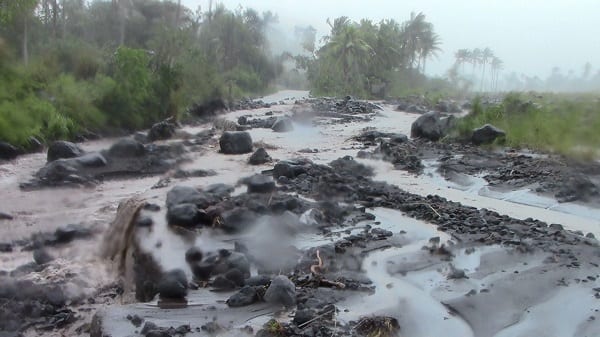
Mount Mayon, with its conical shape and lush surroundings, presents about as stereotypical of an image of an island volcano as you can get. Located on the Philippine island of Luzon, Mayon is active and has erupted a number of times in recent history. On such instance occurred on May 7, 2013.
On the day in question, Roel Llarena and other local tour guides were leading a group of foreign tourists on a hike up Mayon. The excursion had been a good one. The tourists were friendly, and they’d all enjoyed the previous night, with guides and travelers exchanging stories of their adventures. As the group made their way up the mountain, rain began to fall. Climbing Mayon in a driving rain is not a good idea, so everyone turned back. Suddenly, a column of ash exploded upward from the volcano’s cone.
As the hikers and tour guides watched aghast, boulders as large as minivans came cascading down at them. Roel later recounted, “I stood there frozen. I couldn’t believe what was happening, I didn’t know what to do. It was like a scene from hell.” The group tried to take cover behind a large rocky outcropping, but not everyone would make it. Roel’s brother-in-law, three Germans, and a Spanish woman were struck by the tumbling rocks, their bodies carried out of sight.
The surprise eruption lasted only 73 seconds and did not herald the start on an increased period of volcanism. Renato Solidum, the chief state seismologist, stated that the explosion was set off by the rains coming into contact with hot ash deposits at the mouth of Mayon’s crater. Regardless of the cause, Roel vowed never to climb Mayon again.[6]
4 Carried 2 Miles By A Tsunami
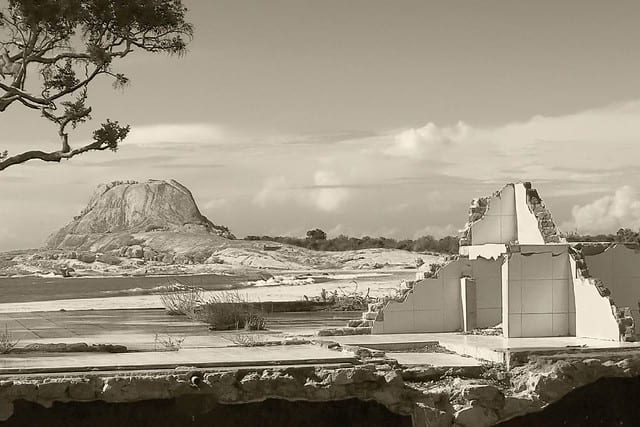
Sonali Deraniyagala and her family spent Christmas 2004 on vacation from London at Yala National Park in Sri Lanka. The day after Christmas was the fourth day of their vacation. Sonali was talking with her friend, Orlantha, when the latter noticed something unusual about the sea: A large wave seemed to be coming in. Sonali’s husband, Steve Lissenbergh, was in the shower, but she called to him to come look at the strange oceanic behavior. The wave kept coming right past the boundaries of the beach without stopping. Gray-brown water surged through the trees and drew ever closer to the hotel. Sonali yelled much louder for Steve, who emerged from the shower. He couldn’t believe what he was seeing any more than his wife could.
Sonali’s thoughts turned only toward saving her two sons, seven-year-old Vikram and five-year-old Nikhil (nicknamed “Malli”). She grabbed her boys and ran for the front of the hotel, Steve trailing behind. They reached the front, Vikram and Malli now running alongside their mother, keeping pace despite being barefoot. A man driving a Jeep with a canvas top saw them and stopped. The family jumped in the helpful stranger’s Jeep, and the vehicle began to pull away. Sonali couldn’t see any water now and thought that perhaps the wave had finally stopped. She began to calm a little, only to become worried again, this time about her parents, whose room she’d run right by in her dash to save her sons. Steve assured her that they’d be okay, something which seemed entirely plausible now that the wave was out of sight.
Suddenly, the Jeep was inundated by water and at the tsunami’s mercy. The water rose, and Sonali and Steve each held one of their sons as high as they could, the boy’s faces pressed against the canvas top as the Jeep became an unwieldy boat, its tires no longer touching the ground. The last time Sonali saw Steve’s face, a look of terror the likes of which she’d never seen had spread across it as his eyes locked on something behind her. She never knew what it was, because that’s when the Jeep capsized.
Sonali’s next moments were nothing but disorientation and pain. She felt crushed, dragged, whipped back and forth. She wasn’t sure at times if she was underwater or above it. When she’d open her eyes, she’d see only gray. Sonali was pulled along by the seawater at a speed she could not guess, battered by debris until she finally hit a tree branch and was able to cling to it.
Sonali had been carried almost 2 miles (3.2 km) inland by the water. She was the only survivor of her family. Her husband, two sons, and parents had been killed by the infamous December 26, 2004, tsunami, which claimed hundreds of thousands of lives across the Indian Ocean.[7]
3 A Bone-Shattering Avalanche
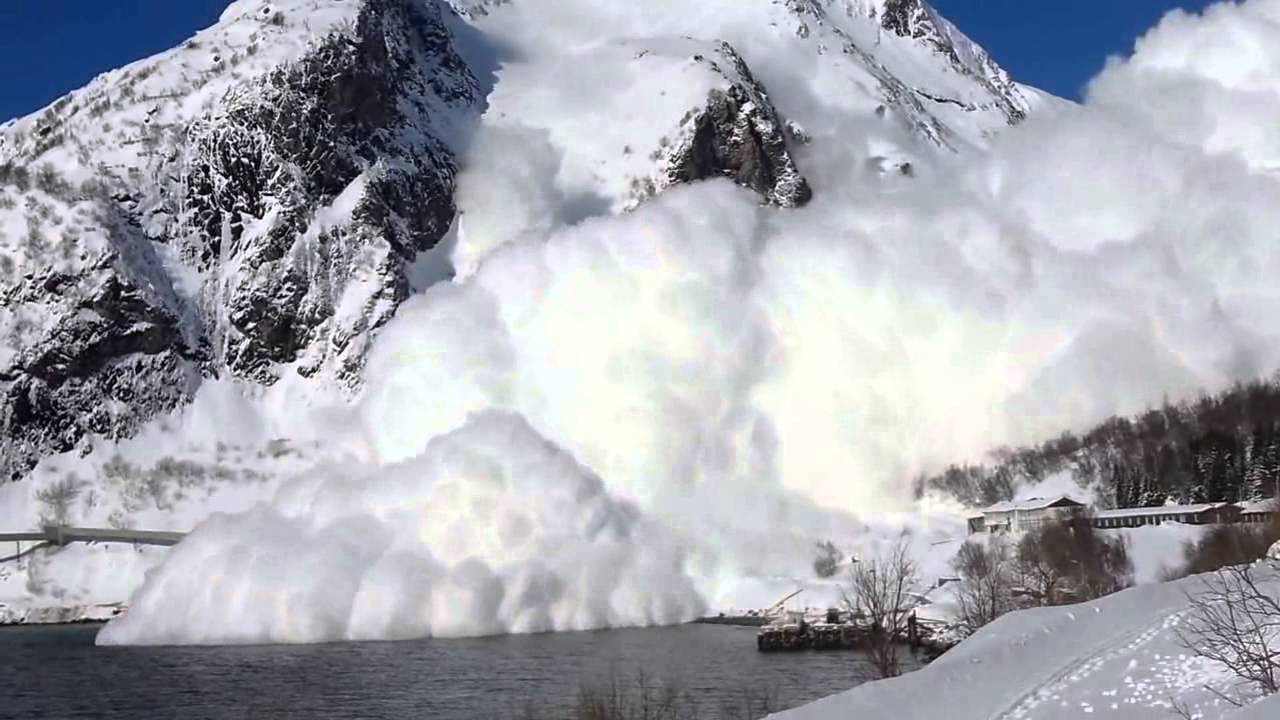
During the morning of January 13, 2016, Mike Brede was backcountry skiing with his friends, Brandon Byquist and Jason Hershey, near Lookout Pass, which is on the Idaho-Montana border. The three men were all experienced skiers and were certainly aware of the dangers of avalanches. That morning, however, the snow seemed fine, and they’d skied the area before.
After more than two hours of excursion, they reached a point where the slope was steeper. As they traversed the slope, they heard a boom and felt shock waves beneath their feet. Mike made a few turns, trying to ski out of the danger zone, but a cascade of snow swept him away.
Mike, thinking quickly, pulled the cord to his airbag, a device meant to keep an avalanche victim above the snow and therefore visible to rescuers. It is believed that this is what kept him from being buried alive. However, nothing could prevent the avalanche from sending Mike over a ridge and into a basin full of rocky outcroppings. He felt freefall and then a tremendous pain in his leg. Mike landed in a sitting position facing uphill. He immediately raised his arm to further increase his chances of remaining visible. Snow piled over Mike up to his chest. His pelvis had been broken, and the flesh of his lower leg had been torn back, exposing his tibia and fibula.
Brandon and Jason skied down to Mike, itself a risky move which triggered small slabs of snow to fall as they went. They applied QuikClot to Mike’s lower leg to stop the bleeding and braced it with their ski poles. Afterward, they discovered that Mike’s femur had suffered a compound fracture, and he was bleeding from there as well. There was no hope of moving him on their own, and they’d already used all the QuikClot.
The men called 911 and activated Mike’s emergency beacon. By this point, it was now past 3:00 PM. Daylight was burning, and the weather was worsening. Ground crews would never get to Mike, Brandon, and Jason safely, and using a helicopter was a dicey proposition. A bit before 4:00 PM, they got a call that Two Bear Air, a philanthropic rescue organization with two helicopters which also funds search and rescue missions, would try to get a helicopter to their location, the key word being “try.” In the meantime, Brandon and Jason tried to keep Mike warm, giving him their down layers and gloves. It was snowing heavily, and visibility was terrible. Two Bear Air pilot Jim Bob Pierce had to fly low, following Interstate 90, just to navigate to Lookout Pass.
Finally, just as it was getting dark, the three skiers, Mike still bleeding and now hypothermic, heard the helicopter. Mike was in bad shape; there was no time to stabilize him on a litter. He had to be taken up in what’s referred to as a “Screamer Suit,” which Pierce described as “a coat with a strap that comes between his legs and works like a little hammock.” In Mike’s condition, being raised off the ground in this manner would not be a pleasant experience. As he recalled: “The rescuer told me to prepare myself for the worst effing pain of my life.” He was pulled up with the paramedic, and the helicopter sped off to a waiting ambulance at Lookout Pass.
Mike needed six units of blood and was in emergency surgery for three hours. He was hospitalized for ten days, and full recovery was expected to take about a year. Nevertheless, he is very much alive, as are Brandon and Jason.[8]
2 Crushed
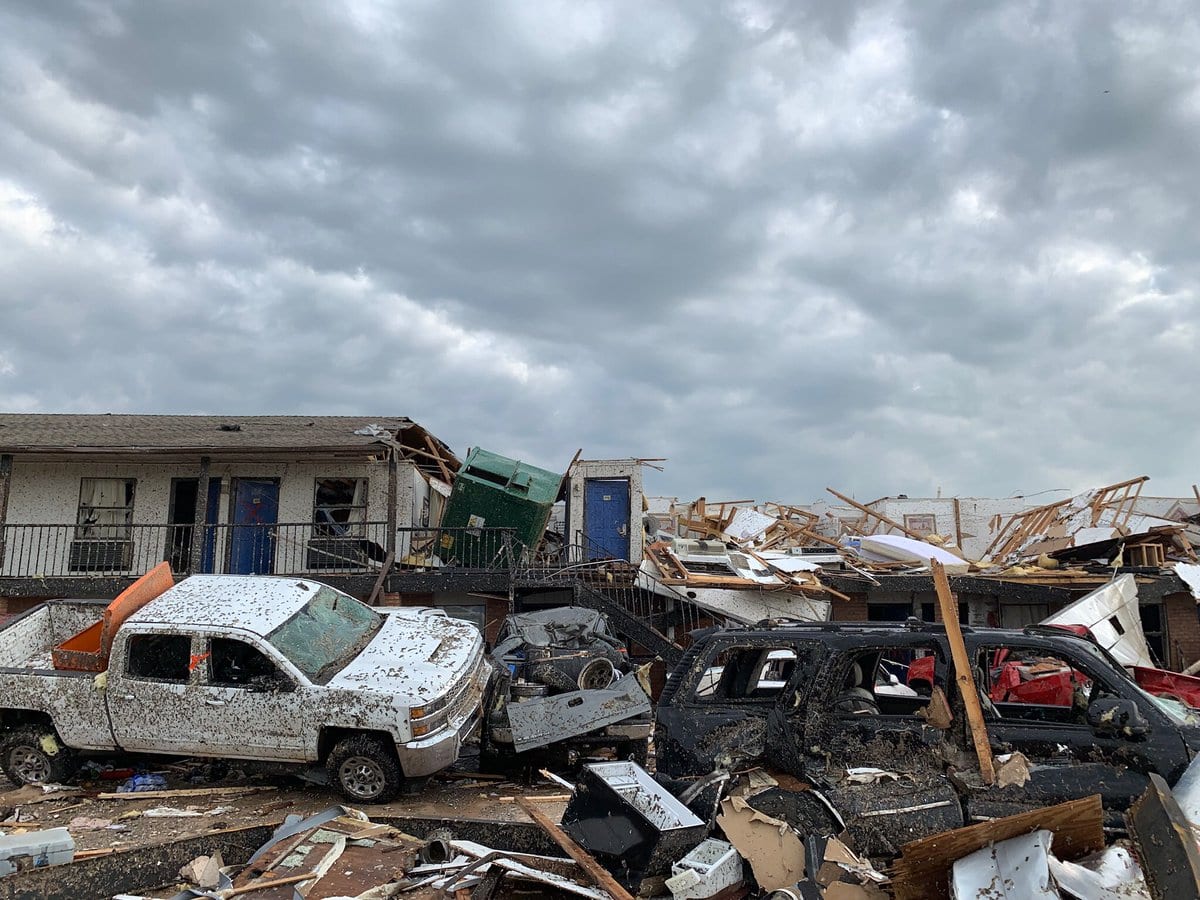
Preston Black of El Reno, Oklahoma, was at home with his wife, their six children, and his parents on the evening of May 25, 2019. At 10:28 PM that night, an EF3 tornado touched down. It lasted a mere four minutes but traveled 2.2 miles (3.5 km) in that time, passing straight through the mobile home park in which Preston and his family lived. Trailers provide minimal protection from a tornado, and there was no time to react to the sudden appearance of this one.
There was little Preston could do but cover his children as best he could, the rain pelting the trailer horizontally as the twister approached. First the doors were ripped from their hinges, and then every window shattered. As the family huddled inside, the mobile home was first flipped upside down and then lifted into the air. A few seconds later, it was torn apart.
Preston hit the ground face-first. He couldn’t see anything initially, but he could feel crushing weight on top of him. Two walls, a refrigerator, and a washer/dryer had landed on him. Preston didn’t care. He could see now, and his wife of 14 years was unconscious near him, also pinned under the walls and appliances. Adrenalized, Preston rolled next to her and managed to lift the debris enough for his family to pull his wife free, ignoring the pain which racked his upper body. As soon as his wife was free, Preston let the pile fall back on him, but his family and now several friends worked to free him.
Preston had a moment of relief upon seeing that his children had survived the tornado with only minor injuries. His best friend immediately drove him to a nearby hospital, from which Preston was transferred to another hospital in Oklahoma City. Both of his shoulders as well as his collar bone had been dislocated, four of his ribs and one shoulder blade were broken, and he had a collapsed lung. Preston’s wife ended up five rooms down from him, with several broken bones of her own. The next day, Preston was finally able to walk down the hall to see her. The couple were reunited with their children that day as well.[9]
1 A Home Lost Forever
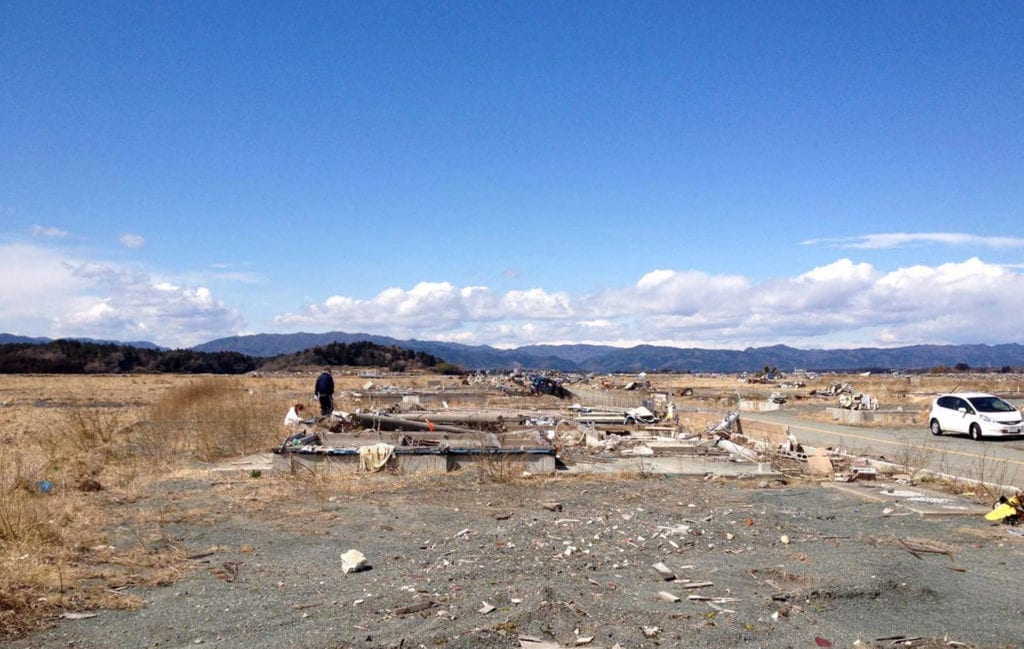
Before the earthquake and subsequent tsunami which devastated parts of Japan in March 2011, Ryo Kanoya (also spelled Kanouya) lived with his family in the village of Namie in Fukushima Prefecture. He was at work when the earthquake hit. A tsunami alert soon followed. Ryo’s company ordered employees who lived near the coast to go home to help the elderly evacuate. Ryo headed for his house, situated 0.6 miles (1 km) from the ocean.
However, the by time he got home, the predicted arrival time of the tsunami had already passed. Since nothing had happened, Ryo’s father figured everything would be fine. Ryo ended up watching the news with his grandmothers while his father was upstairs. His mother and sister were still at work. Then the power went off, and Ryo’s father yelled for everyone downstairs to get upstairs as quickly as they could. Ryo helped his grandmothers to the second floor and looked out a window toward the ocean. A massive tidal wave was barreling in. Ryo’s first instinct was to flee, but there was no time. He and his family could only brace themselves as the sea approached.
The tsunami hit, and the family’s home withstood the impact. However, it began to fill with water. The water steadily rose until everyone’s faces were pressed against the ceiling, desperate for a last gasp of air. Then there was no air. Trapped underwater and unable to get out a window, Ryo thought, “I may as well exhale the remaining air in my lungs to die.”
Finally, the house gave way, spilling everyone into the chaotic wash of seawater and pieces of the neighborhood. Ryo saw his father, but then the currents washed the two away from each other. Ryo climbed onto a drawer, but he saw that he was being pulled back toward the ocean. Luckily, he managed to grab onto a mass of debris stuck to a large tree. He held tight as he saw people being swept out to sea on either side of him. Eventually, the water receded, and Ryo was able to climb down.
Cold, wet, shoeless, and fearing that another tsunami might hit, Ryo set off inland. He repeatedly called out, “Anyone alive?” But every person he saw was dead. Ryo finally came across a survivor, an elderly man. Then the two of them saw a fire truck and ran toward it, Ryo noting a few other survivors on the roofs of buildings. They ended up at an evacuation camp, but then they had to move from there due to the meltdowns at the nearby Fukushima Daiichi Nuclear Power Plant.
At a shelter in Okada, Ryo was reunited with his sister, mother, and father, who had survived. Ryo’s grandmothers were never found. To this day, Ryo’s family cannot return to Namie due to its proximity to the power plant.[10]
For more lists on natural disasters see Top 10 Bizarre Phenomena Connected To Tragic Disasters, and 10 Major Natural Disasters Predicted In The Near Future.

